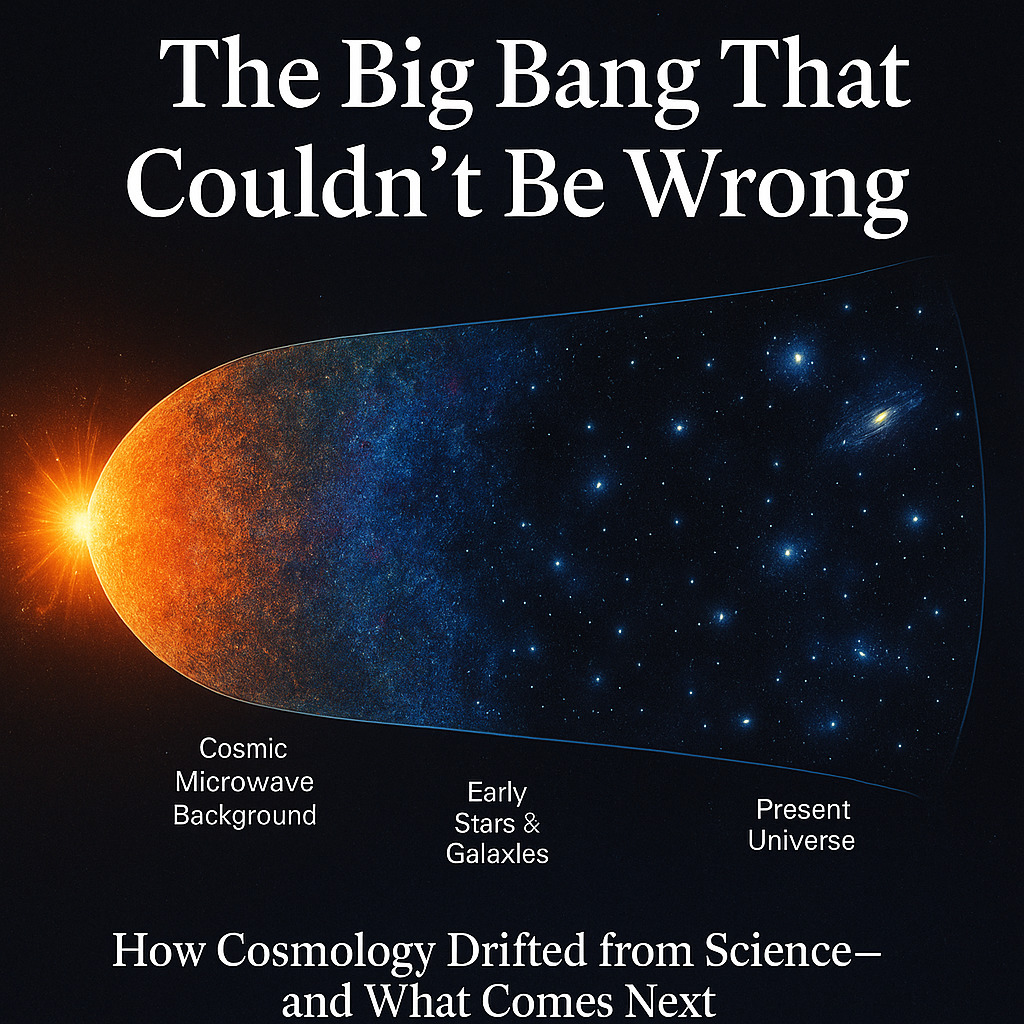
The Model That Couldn't Be Wrong: How the Big Bang Stopped Being Science
For decades, the Big Bang theory has been the reigning story of our universe's origin. It's taught in schools, referenced in popular culture, and spoken of with near-religious certainty. The idea that everything began 13.8 billion years ago in a single explosive moment has become foundational to modern cosmology.
But what if that foundation is no longer scientific?
Science, at its core, is about falsifiability. A theory must make predictions that could potentially be proven wrong. That’s how we refine ideas, separate truth from error, and move closer to understanding reality.
Yet the Big Bang model has grown into something else. With every new observation that contradicts its expectations, the model doesn’t fail — it expands. It absorbs the contradiction, adds a patch, and keeps going.
- Galaxies too big, too early? Add early starburst mechanisms.
- Spiral galaxies at redshift z > 10? Invoke rapid cooling models.
- Heavy elements where there should be only hydrogen? Propose unseen Population III stars.
- No sign of a cosmic "fog"? Shift reionization earlier.
Instead of challenging the theory, every discovery is folded back into it. It becomes more complex, more convoluted, but never wrong. In this way, the Big Bang theory has quietly crossed a line:
It is no longer falsifiable.
And that means it is no longer science in the strictest sense.
A Model Built Like a Fortress
To question the Big Bang today is to question an entire ecosystem of nested assumptions: dark matter, dark energy, inflation, cosmic reionization, and more. Each was introduced to fix a crack in the original theory. None have been directly observed. Yet they are accepted as real because they keep the central story intact.
The problem? A theory that can never be wrong will never be proven right. It loses its grip on reality. It becomes, in effect, a kind of scientific mythology.
And this mythology is deeply embedded. It determines funding, shapes careers, and filters what counts as a "legitimate" question. Even when powerful new tools like the James Webb Space Telescope return data that should shake the model to its core, the response isn’t to reconsider the framework. It's to retrofit the data into it.
A New Possibility: Cosmic Seed Theory
Cosmic Seed Theory (CST) breaks the cage. It proposes a simple but radical shift: what if galaxies don’t all come from one universal explosion? What if each one forms from its own local expansion event — a "galactic Big Bang"— triggered when a supermassive black hole crosses a threshold and releases its condensed energy?
Under CST:
- The cosmos is far older than 13.8 billion years.
- Galaxies are independent structures with their own lifecycles.
- Redshift isn’t a timestamp, but a signature of motion and local history.
- The universe didn’t begin once. It begins everywhere, constantly.
Most importantly: CST is falsifiable. If JWST found no mature galaxies at high redshift, or if galactic structures never aligned with their own expansion shells, CST would be in trouble. That’s what makes it science.
The Road Ahead
This isn’t about attacking the scientists who built the Big Bang model. It served us well for a long time. But it has become too sacred to question. And when a model becomes immune to contradiction, it becomes a prison for new ideas.
It’s time to re-open the door.
Not because we want to rebel.
But because the data demands it.
Because the universe we’re seeing — structured, mature, and vast beyond measure — is trying to tell us a new story.
All we have to do is listen.
